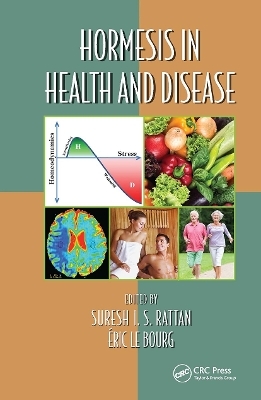
Hormesis in Health and Disease
CRC Press (Verlag)
978-1-032-92083-2 (ISBN)
Some mild stresses have positive effects on survival and aging as shown in animal models. There is also a large body of research that demonstrates these hormetic effects on aging, health, and resistance to severe stresses and diseases in human beings. However, the data are dispersed in the literature and are not always interpreted as hormetic effects. Hormesis in Health and Disease reviews the evidence for hormesis in humans as achieved through a variety of stresses or stimuli, and discusses mechanisms of hormesis and its ethical and legal issues.
Divided into four sections, this book presents the current state of research, including questions, debates, doubts, and controversies in hormesis. Section I covers the history and terminology of hormesis, describing its main features and providing necessary background information. Section II shows that hormetic effects can be caused by various stresses—including physical exercise, nutritional components, fasting, micronutrients, irradiation, heat, ischemia, and mental challenge—and can be observed both in organs and at the organism level. Section III reviews possible mechanisms of hormesis that have been elucidated at this point. Section IV discusses the wider consequences hormesis may have for everyone.
This book demonstrates that health beneficial hormetic effects do exist in human beings. It offers information to inspire key players to initiate new strategies to elucidate the strengths and limits of the dual nature of stress.
Suresh I.S. Rattan, PhD, DSc, is an internationally renowned biogerontologist at the Laboratory of Cellular Ageing, Department of Molecular Biology and Genetics, Aarhus University, Denmark. He is one of the pioneers for the testing and application of hormesis in aging research and interventions. His research expertise includes elucidating the molecular mechanisms of human cellular aging. Dr. Rattan is the discoverer of the aging-modulatory effects of kinetin and zeatin, which are now used in several skin care products. He is the editor-in-chief of the journal Biogerontology. He has published numerous original research papers and reviews, and is the author of popular science books for children in several languages. Éric Le Bourg, PhD, DSc, is an internationally renowned biogerontologist at the French National Center for Scientific Research (CNRS), Université Paul Sabatier, Toulouse, France. He is well known for his studies on the effects of mild stress in Drosophila but is also working on learning, behavior, and demography matters. He has published numerous papers and has written several books on aging in French for the lay public and academics on the biology, demographic, and social matters. Both editors have previously collaborated and edited the book Mild Stress and Healthy Aging (Springer 2008) and brought out two special issues of the international peer-reviewed journals Biogerontology (2006) and Dose Response (2010).
Section I History and Terminology. Section II Evidence for Hormesis in Human Beings. Section III Molecular Mechanisms of Hormesis. Section IV Hormesis in Risk Assessment. Index.
| Erscheinungsdatum | 16.10.2024 |
|---|---|
| Reihe/Serie | Oxidative Stress and Disease |
| Zusatzinfo | 36 Illustrations, black and white |
| Verlagsort | London |
| Sprache | englisch |
| Maße | 156 x 234 mm |
| Gewicht | 703 g |
| Themenwelt | Medizin / Pharmazie ► Allgemeines / Lexika |
| Medizin / Pharmazie ► Medizinische Fachgebiete ► Pharmakologie / Pharmakotherapie | |
| Naturwissenschaften ► Biologie ► Zellbiologie | |
| ISBN-10 | 1-032-92083-1 / 1032920831 |
| ISBN-13 | 978-1-032-92083-2 / 9781032920832 |
| Zustand | Neuware |
| Informationen gemäß Produktsicherheitsverordnung (GPSR) | |
| Haben Sie eine Frage zum Produkt? |
aus dem Bereich


